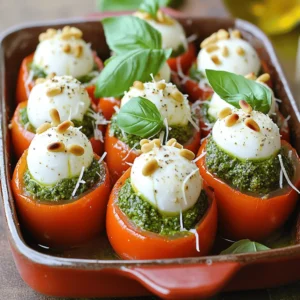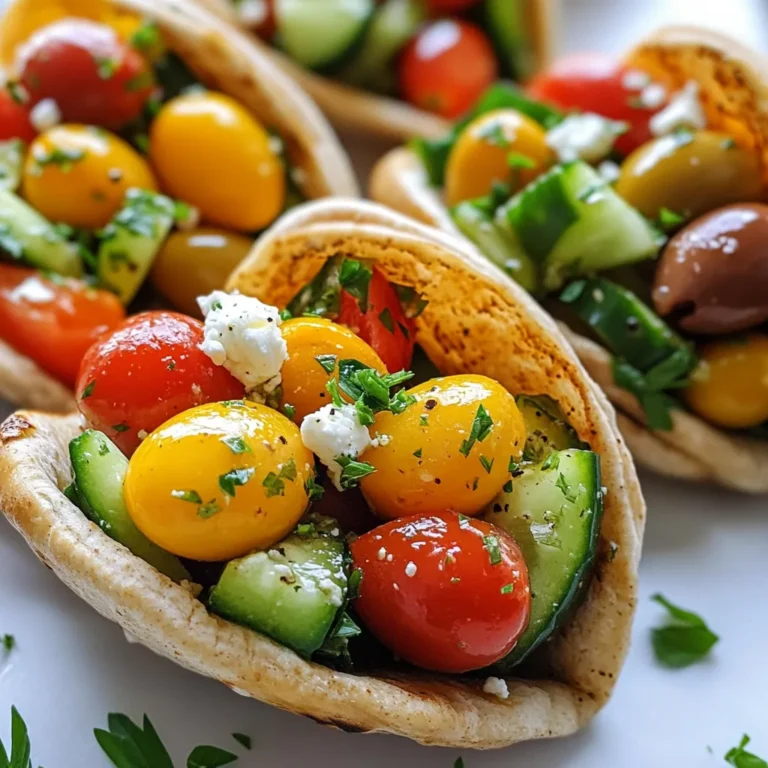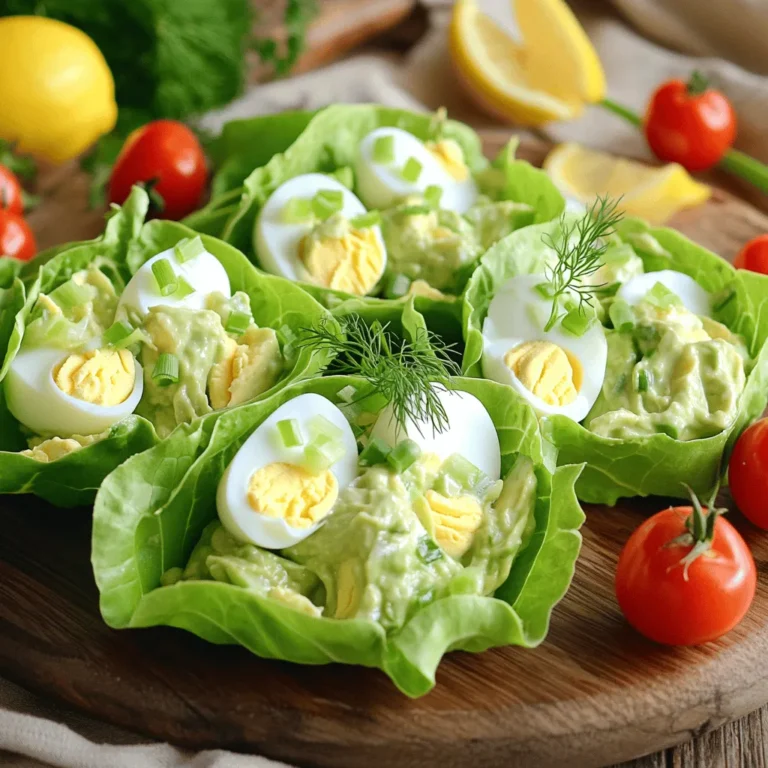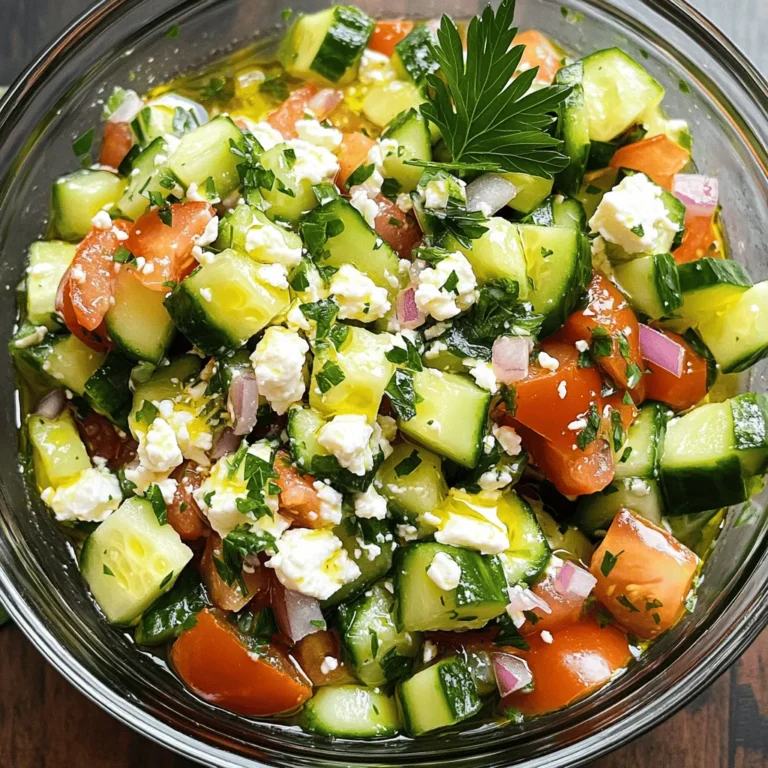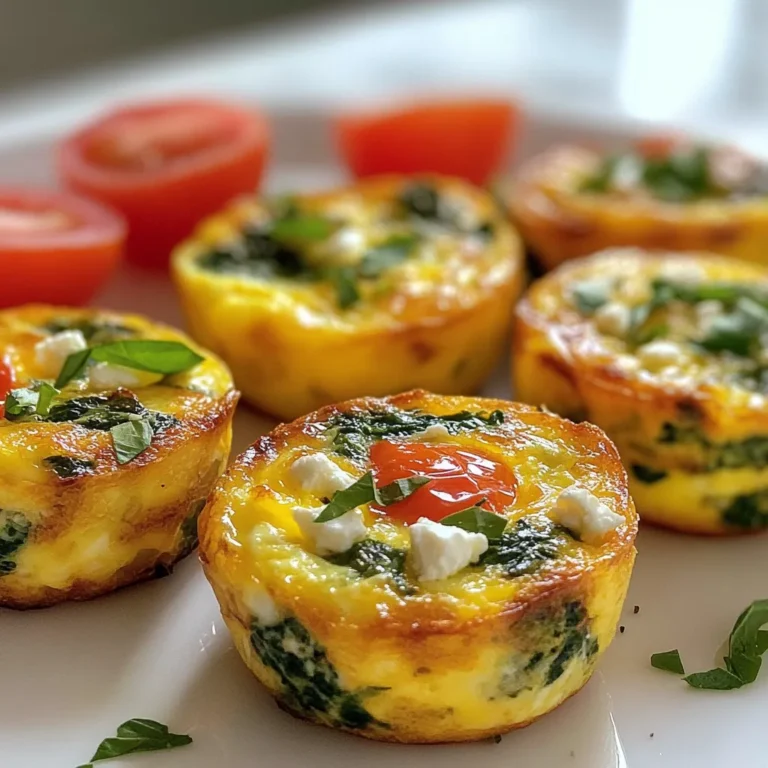Pesto Mozzarella Stuffed Tomatoes Flavorful and Fresh
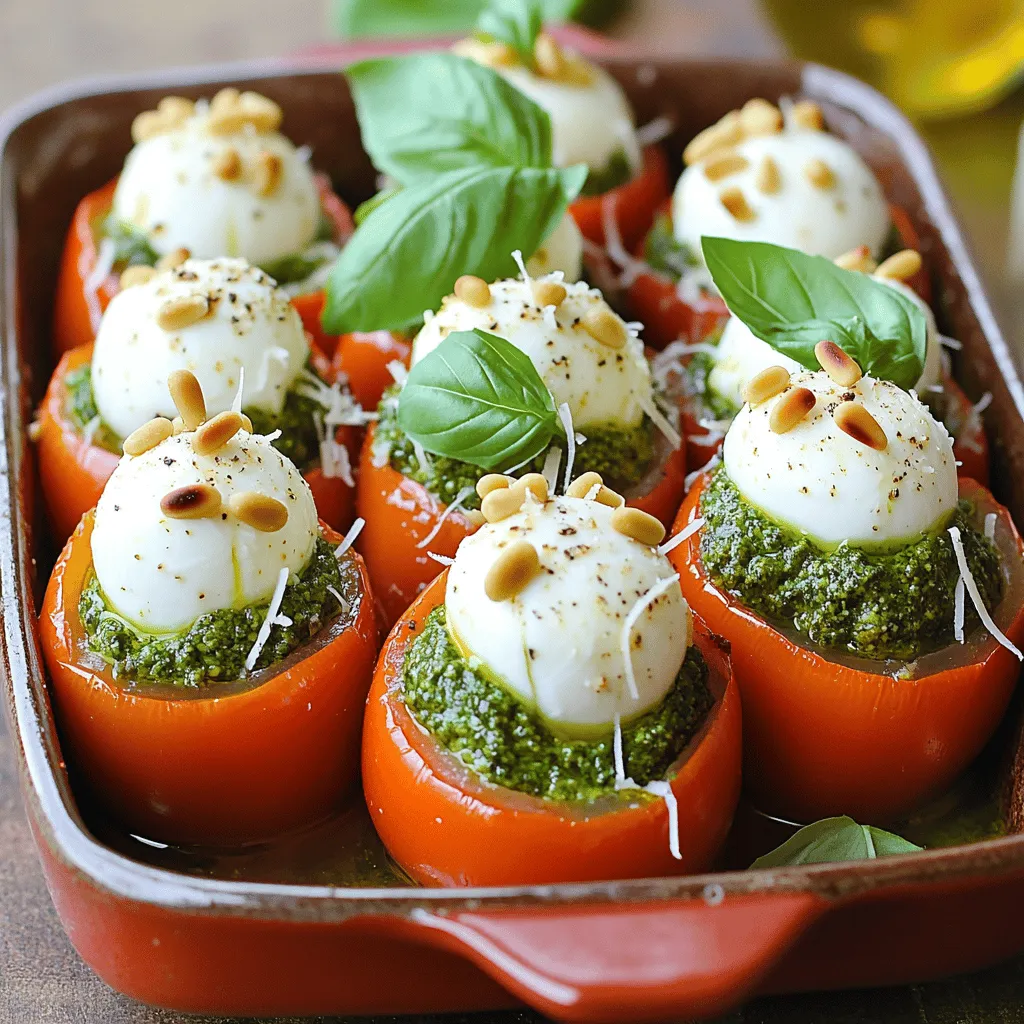
Get ready to elevate your mealtime with my Pesto Mozzarella Stuffed Tomatoes recipe! These tasty treats burst with flavor and freshness, making them the perfect dish for any occasion. I’ll share my favorite ingredients, easy steps, and helpful tips to create a dish that will impress your family and friends. Whether you are a novice cook or a kitchen pro, this recipe is bound to become a new favorite. Let’s dive in!
Ingredients
List of Ingredients
– 4 large, ripe tomatoes
– 1 cup fresh mozzarella balls (bocconcini)
– 1/2 cup basil pesto, fresh or store-bought
– 1/4 cup grated Parmesan cheese
– 1/4 cup pine nuts, toasted for added flavor
– Salt and pepper, to taste
– Fresh basil leaves, for garnish
Ingredient Tips
How to choose ripe tomatoes:
Look for tomatoes that are firm but slightly soft to touch. Their color should be bright and even. Smell the stem end; it should have a sweet, fresh scent.
Selecting high-quality cheese:
Choose mozzarella that is fresh and creamy. For Parmesan, look for aged cheese with a nutty flavor. Always buy from trusted brands for the best taste.
Recommended brands for basil pesto:
If you go for store-bought, I recommend brands like Buitoni or Barilla. They offer great flavor without any preservatives. If you have the time, making your own pesto at home adds freshness and taste.
Step-by-Step Instructions
Preparing the Oven and Tomatoes
Start by preheating the oven to 375°F (190°C). Preheating is key. It ensures even cooking and helps the cheese melt just right. Next, grab your tomatoes. Cut off the tops carefully. Use a sharp knife for a clean cut. Now, take a spoon and gently scoop out the insides. Aim to leave about a 1/4-inch thick shell. This keeps the tomatoes sturdy. You can toss the seeds and pulp or save them for another tasty recipe.
Making the Filling
In a medium-sized bowl, mix together the fresh mozzarella balls, basil pesto, grated Parmesan cheese, and toasted pine nuts. Use a spatula or spoon to blend everything well. Make sure every bite has a bit of each flavor. After mixing, taste the filling. Add salt and pepper to season it. Proper seasoning makes a big difference in flavor.
Baking the Stuffed Tomatoes
Once your tomatoes are filled, place them upright in a baking dish. Make sure they stand securely without wobbling. This helps them cook evenly. Now, pop the dish in the preheated oven. Bake for about 20-25 minutes. You want the tomatoes to be tender and the cheese to be bubbly and golden. Keep an eye on them during baking to avoid overcooking.
Tips & Tricks
Enhancing Flavor Profiles
To boost the flavor of your pesto mozzarella stuffed tomatoes, try adding some spices or herbs. A pinch of red pepper flakes can add a nice kick. Fresh thyme or oregano can also give a lovely aroma to the dish. If you want a different texture, consider mixing in some finely chopped sun-dried tomatoes or even artichoke hearts. These additions can change the whole vibe of the dish while keeping it fresh.
Serving Suggestions
Pair your stuffed tomatoes with a crisp side salad or some garlic bread. A light, tangy vinaigrette complements the rich flavors of the tomatoes. For garnishing, sprinkle some extra grated Parmesan cheese on top after baking. Fresh basil leaves not only add color but also enhance the taste. You could even drizzle some high-quality balsamic glaze for a touch of sweetness.
Common Mistakes to Avoid
One common mistake is overstuffing the tomatoes. This can lead to a mess and uneven cooking. Make sure to leave enough space for the filling to expand. Another error is not preheating the oven properly. This step is crucial for even cooking. If the oven is not hot enough, your tomatoes may end up soggy instead of tender and flavorful.
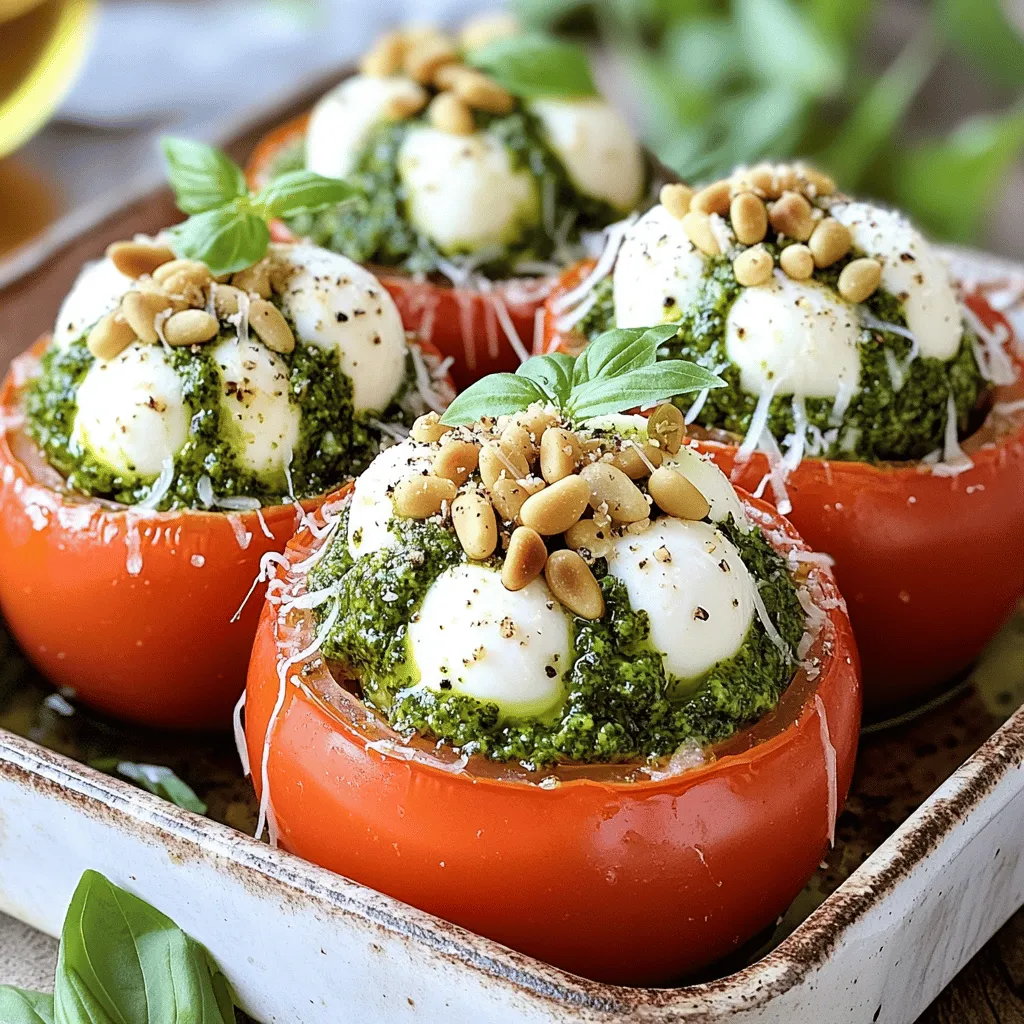
Variations
Alternative Fillings
You can switch up the filling for your pesto mozzarella stuffed tomatoes. Try different cheeses for new flavors. Creamy goat cheese or tangy feta can add a nice twist. If you want protein, add cooked chicken or turkey for a heartier dish. For vegetarians, consider adding diced bell peppers or zucchini for a fresh crunch. Vegan options are also easy! Use dairy-free cheese and a nut-free pesto made from sunflower seeds. This way, everyone can enjoy a tasty treat.
Serving Styles
When it comes to serving, you have options. You can enjoy these stuffed tomatoes warm or cold. Warm tomatoes are comforting, while cold ones are refreshing on a hot day. If you want a fun twist, you can turn them into a salad. Simply chop the stuffed tomatoes and mix them with greens, olives, and a light dressing. This is a great way to serve them as an appetizer or a side dish. No matter how you serve them, these tomatoes will impress at any meal.
Storage Info
Storing Leftovers
To keep your pesto mozzarella stuffed tomatoes fresh, place them in an airtight container. Refrigerate them right away after they cool down. They stay good for about three days. If you notice any moisture, dab it with a paper towel. This helps avoid soggy tomatoes and keeps flavors intact.
Reheating Methods
When it comes to reheating, you have two great options: the microwave or the oven. The microwave is quick but can make the tomatoes soft. Heat them in short bursts of 30 seconds. Check often to avoid mushiness.
Using the oven is better for keeping texture. Preheat it to 350°F (175°C). Place the tomatoes in a baking dish and cover them loosely with foil. Heat for about 10-15 minutes. This method warms them up without losing that lovely taste. Enjoy your meal, whether fresh or reheated!
FAQs
How do I prevent tomatoes from becoming too watery?
To keep your tomatoes firm, start by choosing the right tomatoes. Look for ripe, meaty ones. Before stuffing, scoop out the seeds and excess pulp. This removes extra moisture. You can also sprinkle the insides with salt. Let them sit for 10-15 minutes. This draws out more liquid, helping to keep your filling intact.
Can I use canned tomatoes instead?
Yes, you can use canned tomatoes if fresh ones aren’t available. Canned tomatoes are often more convenient. However, they can be more watery and less flavorful. If using canned, drain them well. Pat them dry with a paper towel to reduce moisture.
What can I serve with pesto mozzarella stuffed tomatoes?
These stuffed tomatoes pair well with many dishes. Serve them with a fresh salad for a light meal. Garlic bread or crusty bread also complements them nicely. For a heartier option, try pairing with grilled chicken or fish. You could even serve them over pasta for a filling dinner.
How do I know when the tomatoes are done baking?
To check if the tomatoes are ready, look for a few signs. They should be tender and slightly wrinkled. The cheese on top should be bubbly and golden brown. If you insert a fork, it should glide in easily. This indicates they are perfectly cooked and ready to enjoy.
In summary, we explored the ingredients needed for delicious stuffed tomatoes, including fresh tomatoes, quality cheeses, and the right basil pesto. I shared tips on selecting ripe tomatoes and making flavorful fill-ups. We discussed baking and serving techniques to enhance your dish. Remember, variations are key; you can try different fillings and serving styles based on your taste. Keep these tips in mind to create a dish that impresses. Enjoy your cooking adventure!
